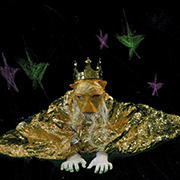Camille Saint-Saëns was well aware of why he had forbidden the publication of his “Carnaval des animaux” during his lifetime. The premiere of the “great zoological fantasia” in Paris on 9 March 1886 had been such a success that he had every reason for concern that the public would measure his output by the “Carnaval” alone, and disregard his more serious works as a result. After a dozen or so further concerts, the composer had had enough: “As far as the ‘Carnaval des animaux’ is concerned, I do not want any further performances”, he explained to his publisher Durand on 24 December 1907 “– unless you would publish it: then whoever wants to play it can. However, if you were to publish it, it would cost you ten thousand Francs.”
In fact, the work was published in March 1922, three months after his death, and in the first year of its publication alone, it was performed in Paris, Amsterdam, London, Chicago, New York and Boston.
“Le Carnaval des animaux” has become Saint-Saëns’ most famous work, quoted, arranged and transcribed countless times – for all possible occasions, in the widest range of contexts and with a huge variety of text interpolations. The “Aquarium” has also acquired such popularity that it is played before every film shown at the Cannes Film Festival.
The historical-critical edition by Sabina Teller Ratner (Bärenreiter, BA 10965, score and parts available on sale) is the crowning achievement of a lifetime’s work: the Canadian “doyenne” of Saint-Saëns research, who is responsible for the first two volumes of the Thematic Catalogue of works, has evaluated all the available sources and corrected and added some details which are missing in other editions. In particular, the dynamics (and the resulting tonal balance) follow the composer’s ideas precisely for the first time. After the publication of the work in the Complete Edition of the Instrumental Works (BA10302-01), it is now being published as a practical edition.
Michael Stegemann
(from [t]akte 1/2024 – translation: Elizabeth Robinson)



